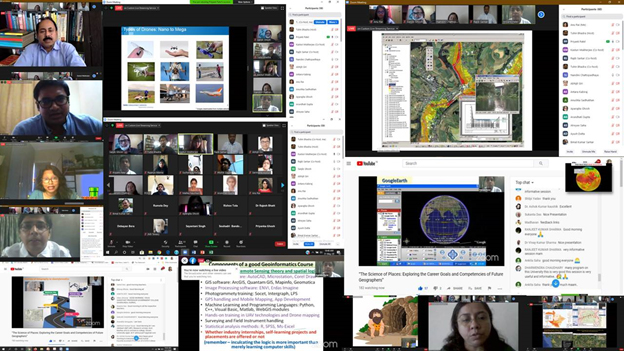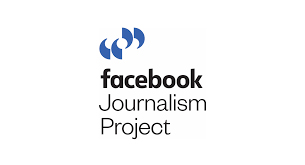The word “pandemic” has a Greek origin meaning an epidemic of a contagious disease that has spread across several countries and continents infecting a large number of people.
Infectious diseases have killed human beings throughout history. In the wake of the present COVID-19 crisis that our planet is going through, it is quite evident that no amount of technological advancement can stop pandemics from happening. Experts have always warned that there are undiscovered viruses and other microorganisms whose number may run into millions and a pandemic happening in the foreseeable future was only a matter of time.
Since prehistoric times, disease outbreaks have wreaked havoc, to the extent of ending entire civilizations. As civilizations developed and progressed, a large number of people living in close proximity to each other and to domestic animals, provided conducive conditions for infectious diseases to grow and spread. The conditions were further aggravated by poor nutrition and poor sanitation. The first global pandemics were created due to overseas trading routes that spread the infections far and wide.
The earliest evidence of a possible epidemic comes from a prehistoric site (Hamin Mangha in northeast China) where human remains of juveniles, young and middle aged adults were found stuffed inside a 5000 year old house. Researchers have called it a “prehistoric disaster” and have concluded that a possible epidemic might have resulted in the deaths and wiping out of an entire village. Another prehistoric mass burial site (Miaozigou, northeastern China) which approximately dates back to the same time period indicates that the region might have been epidemic prone. However, the nature of the disease can only be guessed.
An epidemic that lasted for five years ravaged the people of Athens at around 430 B.C. Scientists have long debated the nature of this epidemic. However, its severity can be understood from the words of Greek historian Thucydides -” people in good health were all of a sudden attacked by violent heats in the head, and redness and inflammation in the eyes, the inward parts, such as the throat or tongue, becoming bloody and emitting an unnatural and fetid breath.” (Source: https://www.livescience.com)
The Antonine Plague may have killed around 5 million people in the Roman empire during the time period A.D. 165-180. The disease which is believed to have been smallpox was first brought into the Roman empire by soldiers who had returned from a war. The epidemic contributed to an end of a peaceful period in Roman history, resulting in growing instability and civil wars. A vaccine for smallpox was introduced by Edward Jenner in 1796. Extensive immunization has completely eradicated smallpox.
Another epidemic, the plague of Cyprian is estimated to have taken 5000 lives per day around A.D. 250-271. The severity of this epidemic was so immense that contemporary religious leaders signalled it to be the end of the world. Archaeologists have excavated burial sites in the city of Luxor, with dead bodies covered with lime which was a popular disinfectant used in ancient times.
The bubonic plague of Justinian (A.D. 541-542) marked the beginning of the decline of the Byzantine empire. It spread across Europe, Asia, North Africa and Arabia. Some reports estimate the loss of almost half of the world population to the pandemic.
Leprosy is a highly contagious bacterial disease that causes deformities in the human body. Europe saw leprosy taking pandemic proportions during 11 th century. Superstitions and absence of scientific temperament led to the belief that it was a punishment from God and victims of the disease faced social ostracization. Presently, leprosy is treatable with antibiotics.
An epidemic named “the black death” (1346-1343) caused by a now extinct strain of the bacterium Yersinia pestis brought about significant changes in Europe’s history. The dead were so large in number that it became hard to find labor. In the absence of scientific understanding of the cause behind the disease, forced isolation was imposed on sailors arriving in the port cities until they furnished proof of not being sick. An isolation of 30 days was known as a “trentino” but with time the forced isolation was extended to 40 days or a “quarantino” thereby coining the term “quarantine”. As an after effect of this epidemic, the surviving workers started getting better wages and lack of cheap labor accelerated technological innovation.
London, one of the major cities of the world, experienced a plague outbreak roughly every 20 years beginning from late 14 th century to late 17 th century – 40 outbreaks in 300 years. To prevent spread of disease, plague victims were forcibly confined to their houses (marked with red crosses), all public entertainment was banned, laws were formulated to separate and isolate the sick and the dead were buried in mass graves. Surprisingly, measures taken to contain pandemics are strikingly similar even in the 21 st century!
During the 16 th century, diseases from Europe and Asia were brought to the Americas by European explorers. The Inca and Aztec civilizations met their end as these indigenous people had zero immunity against these imported illnesses, thereby paving the way for the Spanish to take control of their territories. DNA studies of victims’ skeletons from an epidemic in Mexico and Central America (1545-1548) have revealed the disease to be enteric fever caused by S. paratyphi C. This remains a major threat to human health even today!
Plague epidemics continued to ravage Europe in the latter part of the 17 th century to the end of the 18 th century. One of the major causes of transmission was fleas from infected rodents. Loss of life continued, only the ones with immunity survived.
19 th century onwards, with the advent of the industrial age, a new set of diseases were found to inflict human populations across the world. Notable among them are – Cholera, Influenza, Measles and Polio. Although advancement in medical science and research in this period led to the creation of vaccines for many of these diseases, pandemics continued to occur.
The first cholera pandemic started in Russia in 1817. Cholera is a bacterial disease infecting the small intestine and spreads through water and food. The soldiers and sailors of the British Empire were instrumental in spreading cholera to India, Spain, Africa, China, Japan, Italy, Germany and America. According to rough estimates, around 1, 50,000 people lost their lives. Cholera has been mostly eradicated in the developed countries but it continues in the third world due to inadequate sewage facilities and absence of clean drinking water.
One third of Fiji’s population lost their lives to a measles pandemic in 1875. The disease was carried to the island nation by royal officials of the Queen of England, who contracted it during an official visit to Australia.
A flu pandemic which started in Russia during 1889-1890, quickly spread across the globe in a matter of months aided by new transport links. Around 1 million people lost their lives to the virus.
Influenza pandemics have continually reappeared in various forms till recently. The Spanish flu of 1918-1920 infected around 500 million people of which one-fifth succumbed to its lethality. An avian borne virus was behind this disease and war time conditions brought about by World War I is estimated to be one of the reasons behind the spread.
The Asian flu of 1957 and 1958 originated in Hong Kong and thereafter spread to China, US and England. This flu virus had an avian origin. Over a million deaths were reported across the world before a vaccine effectively contained it. The H1N1 Swine flu pandemic of 2009-2010 was caused by the H1N1 virus that originated in pigs and then spread from person to person. The highly contagious nature of the H1N1 virus resulted in over a billion infections worldwide and casualties that went above 5 lakhs. This contagious disease is preventable by vaccination now.
The ongoing COVID-19 pandemic, believed to have originated in Wuhan, China is caused by severe acute respiratory syndrome coronavirus 2 (SARS‑CoV‑2). As of 2 June 2020, more than 6.25 million cases of COVID-19 have been reported in more than 188 countries and territories, resulting in more than 375,000 deaths; more than 2.69 million people have recovered.
(Source: https://en.wikipedia.org)
I conclude by quoting Benjamin Franklin –“An ounce of prevention is worth a pound of cure.”






















